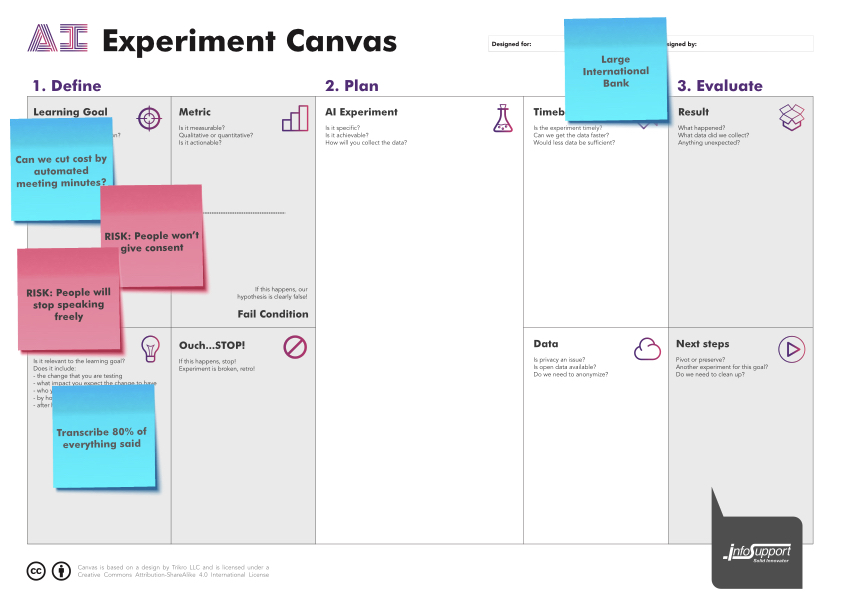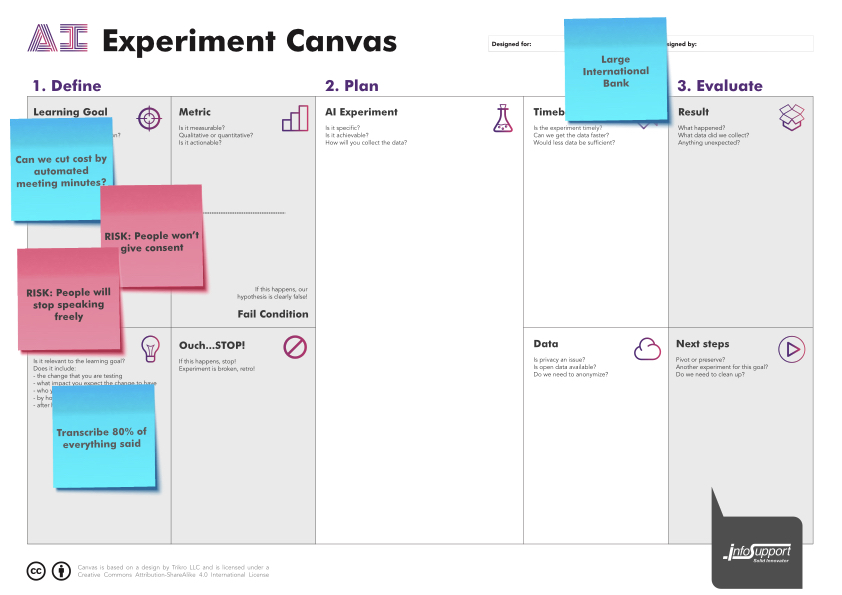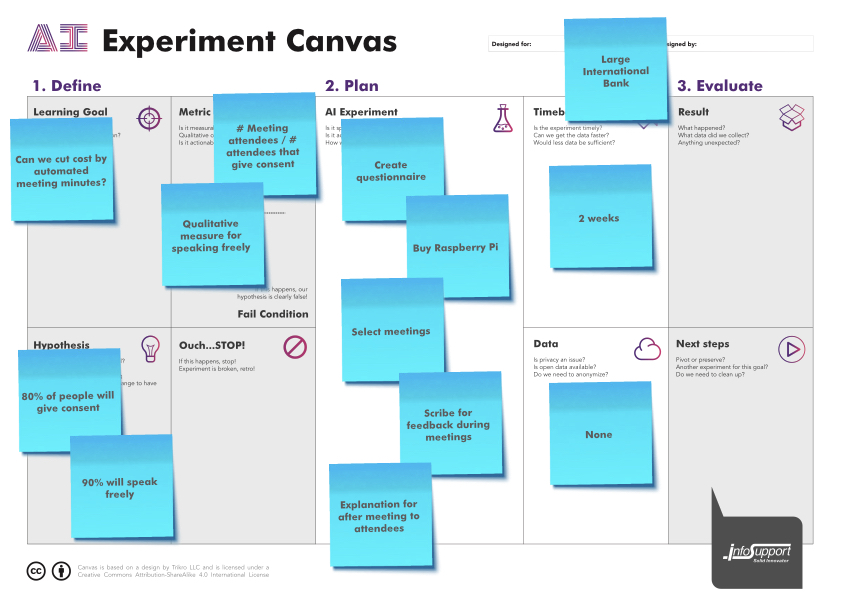Testing Artificial Intelligence ideas without writing code will make you more productive and you won't believe how easy it is

Last week I was facilitating one of our Artificial Intelligence ideation workshops for an international company. One of the groups had a ambitious idea for an AI experiment. Their idea was to record every meeting in the company to generate meeting minutes. On top of that the company discovers the main topics of meetings.
This idea includes a lot of elements of artificial intelligence. It includes speech-to-text, natural language processing, text summarization and clustering. You see, an ambitious idea.
Riskiest assumption
By filling out our AI Experiment Canvas the stumbled over the question: what is your riskiest assumption. After some thought they stated two risky assumptions. The first one as 80% of meeting attendees will give their consent to record their sayings. The second risk as people will continue to speak freely while being recorded.

They made a plan to build a prototype and to experiment with speech-to-text. Sounds like a cool experiment, but I was challenging their approach. Why start building before you validated your assumptions. That’s an expensive approach. You have to write source code, do some testing and stumble on some technical difficulties. Just to build this first step can cost you hundreds of hours.
When we focus on the assumptions, 80% will give consent and will speak freely, then we see they are real show stoppers. If people stop to say what they want, this disrupts meetings and their goals. If too many people reject the recording, then the idea is not viable. And if it’s not viable, you don’t have to build anything. No speech-to-text, natural language processing, etc.
We have to find a simple and cheap approach to test the assumptions by collecting feedback as soon as possible. So we defined a new experiment with the risky assumptions as our hypothesis. 80% will give consent and 90% will continue to speak freely.
How to measure 80% consent
The way to test this is to buy a Rasberry Pi computer for less than $50. This is our fake recording device. We’ll put our ‘recording’ device in the middle of the meeting room and we’ll tell it can record the meeting. We can ask who want to give consent. This will give you a quantitive measure of consent but also a lot of opinions and tips about your idea. Within a couple of meetings you have a opportunity to collect data from tens of attendees.
How to measure 90% will continue to speak freely
With a simple questionnaire we can ask people after a meeting if they changed their behavior. This is an easy and cheap way to collect data and feedback about your idea.

Easy to do, hard to accept
As you can see, it is possible to test an AI idea without writing a single line of code and without investing hundreds of hours. It costs next to nothing, so there’s no reason not doing this, right? If the experiments invalidates the hypothesis you don’t have to spend any more money. And who doesn’t want to save money, right?
To test an idea with such a simple approach was hard to accept. Developers just want to build cool stuff. Another team member was afraid that you cannot use a fake device. It’s a kind of lying. But after the meeting you can explain what you’ve done. Tell the meeting attendees you’re running an experiment and they provided useful insights.
The third team member even said this approach was too easy. And, he was sure everyone wants this product. So no need to test the assumptions.
How about you?
It seems so obvious to take the simple approach. But can you challenge yourself and think of an experiment or product where you forgot to test your riskiest assumption? It requires some creativity and guts to make experiments small and easy. Especially for experiments in Artificial Intelligence, because the outcome is more uncertain. But setting up a small experiment and test your assumptions will save you a lot of money.
Start Experimenting with Artificial Intelligence
Now you want to start yourself with Artificial Intelligence? Let’s go, and download the Info Support AI Experiment Canvas.